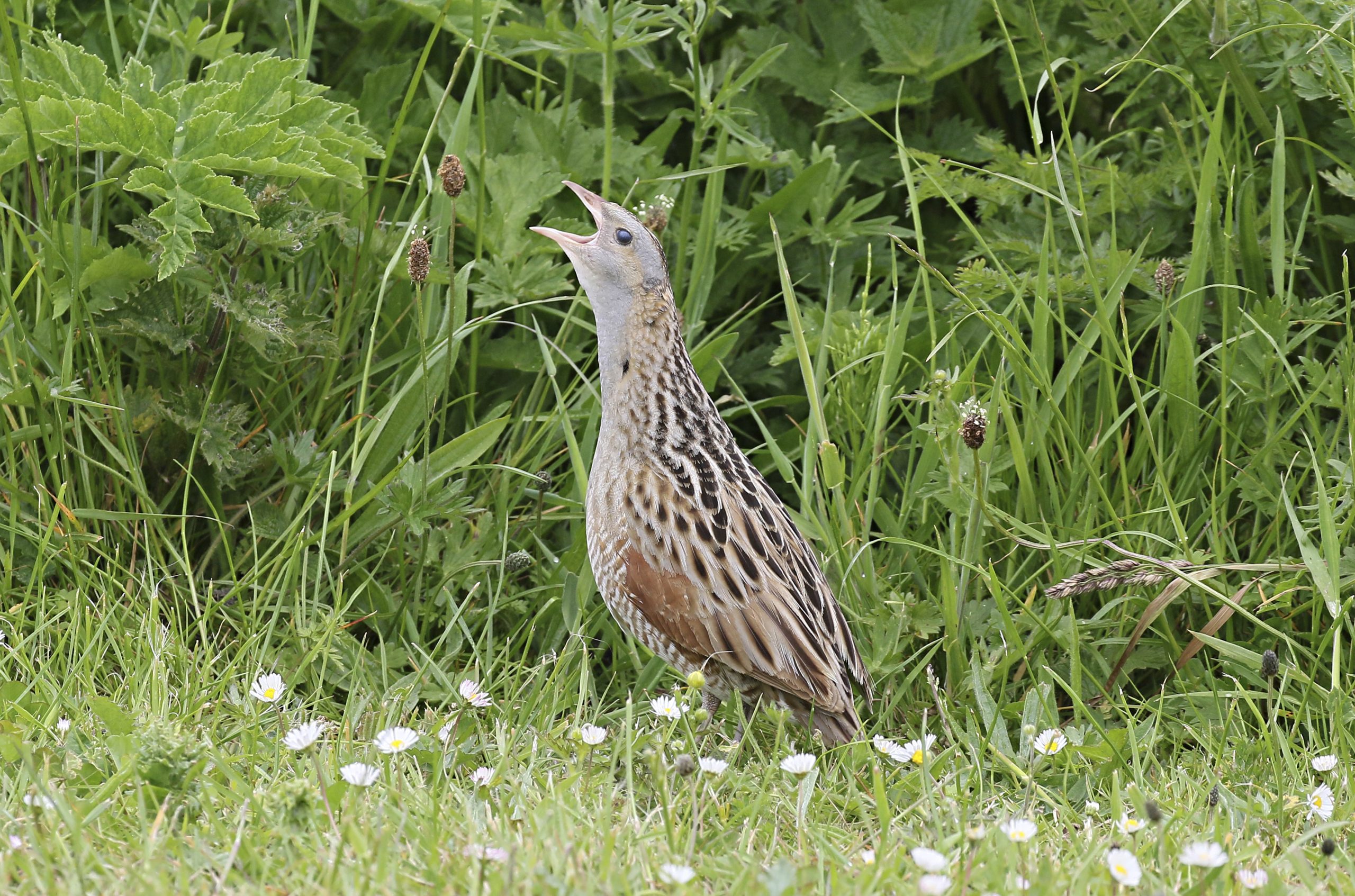
Significant rise in Corncrake numbers recorded by RSPB Scotland
Corncrake numbers in Scotland have seen their first rise in five years, an RSPB Scotland survey can reveal.
This year 870 calling males of these shy rare birds were recorded by the nature conservation charity, up from 828 the previous year.
This takes Scotland’s Corncrake population back to levels not seen since 2019.
While still significantly lower than the 2014 high of 1,282 calling males, it marks an important result in efforts to save these birds.
Corncrakes are small brown birds and incredibly secretive.
They are close relatives to moorhens and coots, but spend the winter months in Congo, migrating back to a few places in Scotland’s islands and mainland to breed.
RSPB Scotland said partnerships through its Corncrake Calling project has led to the increase.
The project increased the quality and the quantity of suitable Corncrake habitat and Corncrake friendly land management practices in key places for these birds.
Through the project RSPB Scotland has also extended its advisory support to more farmers, crofters and land managers, increasing the area of lands being made Corncrake friendly.
Coll, Tiree and Lewis where much of this has been taking place have all seen significant increases in the number of males heard on these islands this year.
Corncrake friendly land management is a year-round commitment, even though the birds are only here as summer migrants.
Over winter, vegetation corridors of Irises, Nettles and Cow Parsley are encouraged to grow by controlling how they are grazed by livestock, usually using fences, and spreading manure.
The birds use these as cover from predators to move about and hide in.

Corncrake. Credit: Graham Goodall
In summer, later mowing dates are required to ensure their nests and chicks aren’t destroyed.
Donald ‘Sweeny’ Macsween, a crofter from Ness in Lewis with a herd of Highland cattle, is one of those working with RSPB Scotland.
A Crofting Agricultural Grant Scheme helped to fund No Fence collar technology for his herd and advice from Corncrake Calling has guided its use for grazing in unfenced areas previously not used to create ideal Corncrake habitat.
The number of males in the township increased from 13 to 19 between 2022 and 2023.
‘The collars have made a huge difference to how I work with my cattle,’ Donald said.
‘I know where they are at all times, and the additional grazing opportunities have saved me money, as well as given them access to fresh grass all year round.
‘My herd increased from six in 2021 to 14 in 2022 and, had feed costs increased at the same rate, I’d have expected to have paid around £4500 over last winter.
‘Utilising the collars, I was able to keep costs down to around £1,200, despite the cost-of-living increases that saw cattle feed increase by 32%.’
Anne McCall, director of RSPB Scotland said: ‘These results are a significant moment for efforts to save Corncrakes in Scotland and a real tribute to the enormous collective effort of farmers, crofters and local communities to help these birds through Corncrake Calling.
‘While we need to see sustained rises year on year to reverse the decline in Corncrake numbers this year’s result of 870 brings hope of a turning point.
‘It shows that targeting the quality and quantity of Corncrake friendly habitat and land management yields results.
‘Corncrakes only live for a couple of years so it’s vital that as many chicks as possible survive each year to make their great migration south.
‘These birds used to be found across the UK so these few areas in Scotland are very special.
‘Corncrake Calling has allowed us to really focus our efforts with these communities to safeguard their future here, and shows the collaborative approach needed across the country to help reverse nature declines.’
Read more stories on Scottish Field’s wildlife and conservation pages.
Plus, don’t miss the November issue of Scottish Field magazine.
TAGS

